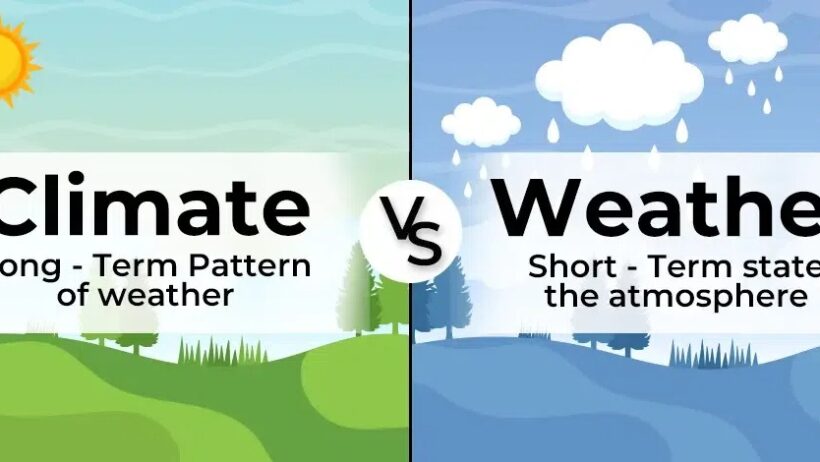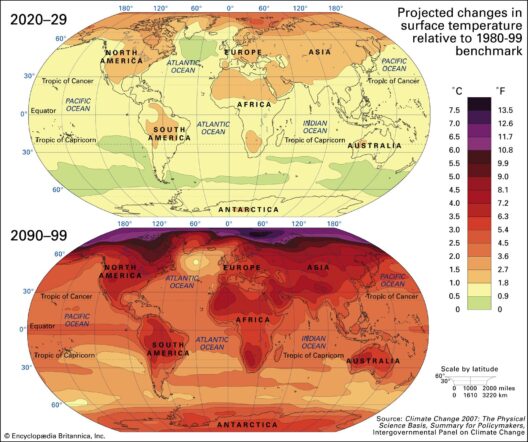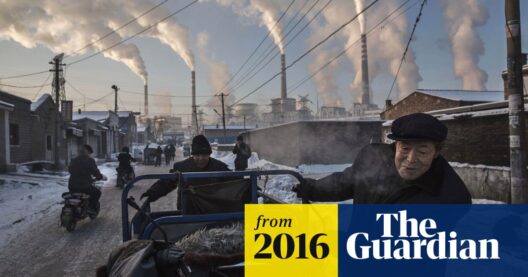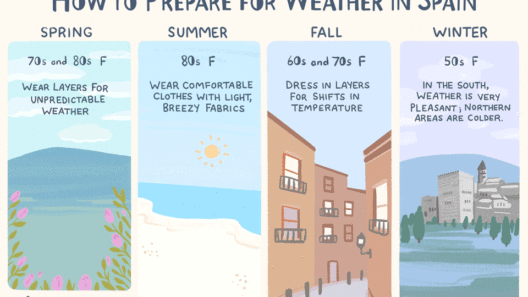When you step outside, do you ever ponder the immediate weather conditions—how the sun either beams down like a warm embrace or the wind howls like an untamed spirit? Alternatively, do you consider whether today’s sultry temperatures could be part of a larger climatic doctrine that shapes our planet over time? Understanding the distinction between weather and climate is not merely an academic exercise; it carries implications that resonate through our daily lives and broader environmental conversations.
The dichotomy often catches individuals off guard, so let’s unpack this concept. Weather refers to atmospheric phenomena occurring over shorter durations, typically hours or days. It encompasses changes in temperature, precipitation, humidity, and wind. Think of it as the theater of nature, producing a variety of portrayals from rainstorms to sunshine. On the other hand, climate embodies the average atmospheric conditions of a particular region over extended periods—often decades or centuries. It’s the overarching narrative that tells us what we can generally expect from a location. For instance, if you were to describe Seattle’s climate, you’d mention its reputation for overcast skies and frequent rainfall as reflected in long-term data.
In other words, while the weather might impress upon us a dramatic downpour this afternoon, the climate informs us that such rain is typical for the region during a specific season. This distinction can influence everything from our wardrobe choices to agricultural planning. However, the interplay between the two is often overlooked, leading to misguided perceptions about environmental changes.
Why should society be concerned with understanding this complex relationship? The implications of confusing weather with climate extend far beyond a mere semantic misunderstanding; they can sabotage effective policymaking and lay the groundwork for underwhelming environmental stewardship. For example, one might witness an exceptionally cold winter and assume this contradicts the notion of climate change. However, short-term anomalies can exist alongside long-term warming trends. This conflation dilutes the urgency associated with the climate crisis, posing a challenge for environmental advocacy.
As climate scientists have reiterated, while one cold snap doesn’t negate a warming planet, it often fuels skepticism and debates within the public sphere. So, why do these short-term weather anomalies occur? The answer lies in the intricate tapestry woven by numerous elements, including atmospheric pressure systems, ocean currents, and natural phenomena such as El Niño and La Niña, which can cause significant climatic variability even in the face of long-term warming.
Another challenge arises from the nuances of regional climates. People residing in temperate zones might proudly recount that winter’s chill has indeed hit their area hard. Yet, rarely do they ponder that the prolonged warming trend may be altering the fundamental patterns of seasonal changes, potentially leading to unpredictable weather events like sudden frosts in spring or relentless heatwaves in autumn. Such weather volatility poses serious threats to biodiversity, agriculture, and public health.
Let’s take a closer look at agriculture, a field intrinsically tied to climate and weather patterns. Farmers rely on climatic predictions to determine planting seasons and crop varieties. If a farmer misinterprets a temporary weather cooling as a sign to delay planting, they risk losing both yields and economic stability. Furthermore, fluctuating weather conditions can open the door to pest invasions, disease spread, and ultimately, food insecurity.
In addition, understanding weather and climate is essential for comprehending extreme events, like hurricanes and droughts. While hurricanes are weather events, climate trends significantly influence their frequency and intensity. As climate change progresses, warmer ocean waters increase the likelihood of more severe storms, leading us to question how well-prepared we truly are for future climatic extremes. Are we equipped to tackle the challenges of rising sea levels, increased flood risks, and prolonged drought periods?
This connection between weather and climate is essential for effective disaster preparedness and response. Cities and regions must invest in infrastructure and sustainability practices, ensuring they are resilient against the volatile forces of nature. However, dismissing the long-term implications of climate change while obsessing over day-to-day weather can result in insufficient safeguards against these looming threats.
To mitigate these risks, the need for an informed citizenry cannot be overstated. By cultivating a better understanding of the intricate relationship between weather and climate, individuals can become empowered advocates for sustainable policies. They can demand changes that reduce greenhouse gas emissions and promote renewable energy, while simultaneously preparing themselves for the changing weather patterns that will unavoidably shape their communities.
At its core, grasping the distinction between weather and climate is about accountability. It drives home the reality that our individual actions have ramifications not just on any given day but can factor prominently into the larger climatic narrative of our time. As you engage with the environment, remember the frequency with which you glance at the forecast or consider long-term weather patterns. Weighing both will equip you to comprehensively confront the climate crisis that demands our unwavering attention.
In conclusion, the weather may ebb and flow with the seasons, but climate constitutes a slow, yet unforgiving tide. As individuals, we must rise to the occasion, grappling with these concepts as we forge ahead in the pursuit of a more sustainable future. The vitality of our planet is contingent upon our understanding of these critical distinctions. Will you heed the call? Will you contribute to a larger dialogue grounded in informed actions? The choice is yours.








